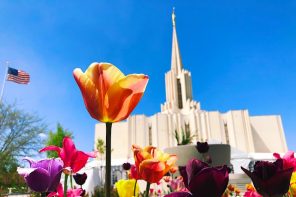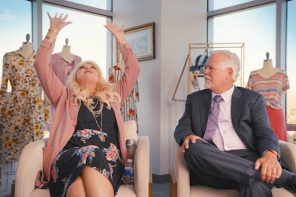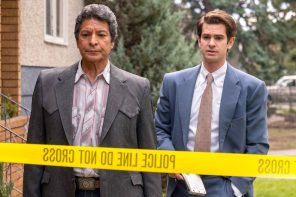In July of 2013, Salt Lake City photographer Katrina Barker Anderson launched Mormon Women Bare, a website featuring nude portraits of Mormon women. Anderson, who has a degree in broadcast journalism from Brigham Young University, spoke to me recently about the project.
HW: What sort of attitudes about nudity did you grow up with?
KBA: My mother is a painter; my father is a physician. So even as I grew up Mormon in small-town Ohio, I came from a background that normalized bodies from an artistic and medical point of view. My parents never made a big deal if we happened to walk around the house naked—not that we were nudists, but we were comfortable in our bodies.
My mom always had art books in the house and as a kid I spent a lot of time looking at them. Nudity in art was never an issue to me. There was a difference between nudity that was meant to titillate and nudity that was a beautiful expression of the human form.
Not until I went to college at BYU did I realize that many Mormons have an issue with nudity in art. I majored in communications/ broadcasting, not art, but I took some art classes. At BYU, models in figure drawing classes wear bathing suits. I also did a study abroad in Spain through the art program, with trips to Paris and London and so forth. I remember a conversation with a male art student in the program, a sculptor, who said that all nudity in art was pornographic. Of course I argued with him about it, and I think that most art students aren’t that extreme. But it shocked me.
When did photographing Mormon women become a project you wanted to do?
I love doing portraits—my favorite subjects are people. That’s where I find the most interest, the most reward. I don’t get bored; every person is different. My journalism background comes out in that I like to tell a story, even if it’s just a picture of a face. Even if it’s just one image, which is one fraction of a second, there’s still a story.
A few years ago I did a project where I photographed breastfeeding mothers.That was the first time I tried to use my art to make a political statement. People try to stigmatize breastfeeding and I used photographs of women nursing their babies to normalize it.
But why Mormon nudes?
There were quite a few stories in 2012 within Mormon culture about modesty. The most extreme might be when an LDS magazine added cap sleeves to the angels in a painting by Carl Bloch.
I was so frustrated. I feel there’s been a shift even in the past five to ten years with more focus on modesty as this very arbitrary thing, like, even angels must wear sleeves. Little girls, even from toddler age, have to dress like they’re wearing the Mormon underwear known as temple garments, which is only for adults. I think that’s crazy.
So many Mormon women have so many issues with their bodies—as a lot of women do in our culture. But I think that Mormon women have even more pointed, specific body issues because they live in this patriarchy where they are judged by their looks almost more than anything and expected to be beautiful and dress well. There’s a really high standard for how Mormon women should look, and yet, we’re also supposed to be covered and not at all sexual in any sort of obvious way.
I was familiar with Matt Blum’s Nu Project—it’s all about body positivity. I thought, how could I explore this same idea, but through the Mormon lens, with Mormon women and their unique stories?
Tell me more about your claim that Mormon women have “more pointed, specific body issues.” I doubt everyone will accept that.
From the moment I showed up at BYU as a high school senior to check the campus out until I graduated, I felt like it was a cuteness contest. There’s a lot of pressure for girls to be attractive. Whether it’s spoken or not, and as much as more independent women might want to deny it, there’s a huge pressure in Mormon culture to get married before age 25. So that campus feels like you’re always on display.
My non-Mormon friends from high school who went to state universities would go to class in pajamas. They would get dolled up to go out at night, but BYU doesn’t have that night culture. People don’t go clubbing; they don’t go to bars. Instead, people feel like they have to look good all day, all the time.
Even for a 7 a.m. class?
Yes. Walk around BYU campus and you’ll see a lot of very shiny, pretty, well-dressed, well put-together college students. It’s required, because you’re trying to attract a mate.
As women age, become mothers, and go through their child-bearing years, there’s still that pressure of, I’ve had babies, but I want to look good. Here I am with my three to five children who are all dressed well and I’m also dressed well, and I’m going to work out three times a week and watch what I eat. Those aren’t bad things, but there’s this cultural expectation of that’s how you have to be.
Then there’s this other expectation that I wasn’t aware of until I moved to Utah as an adult. Utah supposedly has the highest rate of plastic surgery in the country. So many women simply plan to have plastic surgery after they have children. I have a very educated, successful friend who said that in her family, that’s just what everyone does: after they have children, they get a boob job. So that’s what she did, and she’s happy with that, and more power to her. But the idea that that’s an expectation, that’s what I have a problem with. If you want to get a boob job, I don’t care. But if you have so much pressure that that’s just what you do because you think that’s the script, I don’t like that.
I also don’t think fake boobs should be the norm. Women are allowed to have small or saggy breasts.
You’ve discussed the project in terms of modesty, but what about vanity?
I approached one woman in her 60s who told me, “I’m too vain. Even five years ago, I probably would have said yes, but now I just can’t.” I don’t think that modesty and vanity are all good or all bad. It’s about where your comfort level is. I think you should dress to feel good about yourself. So, whether that’s more modest or less modest, you need to feel good. And of course vanity plays into that; I don’t think anyone is without vanity. But I think that this project is about pushing both of those aside and showing the reality of a female body. It’s a very vulnerable, brave thing to do, to put aside our vanity and our modesty. And what’s been so rewarding for me has been when these women tell me how empowering this is.
I didn’t appreciate how empowering it would be until I started taking the photographs. I approached this project from the beginning very much as the observer. Not until I took the photographs did I see how it made a shift for the women. I think every single person has come out of this more comfortable in her skin, more sure of herself, more powerful.
I assume this shift happened before the photographs were posted on the website, right? What is it about being willing to be naked in front of a photographer as proxy for everyone else that causes this?
Women are taking their power and making a choice about what they’re doing with their bodies. They’re not doing what other people tell them to do, they’re not conforming to a standard that they’ve been given. In my statement on the website, I say that it’s about reclaiming. They’re reclaiming their bodies as their own. I think that as a woman who’s grown up in a patriarchy culture, it’s really hard to have a sense of self. From the time we’re little children, we think of ourselves as belonging to our parents, to God, to the church, to our boyfriends, to our husbands, so—
—to children.
(laughs) Yeah! We totally belong to our children! So we belong to all these other people and we don’t belong to ourselves. I think that in this experience, even if no one else sees the photos, each woman is doing something taboo, but she’s also reclaiming and making a choice for herself about her own body and how she wants to use and display it. I also feel I can defend against a lot of the criticisms over a nude photo of a woman being objectifying because I also have her story in her words. If women have a voice, they’re not just a photograph.
That’s also why I chose more than one photo for each woman. I wanted there to be more to the story. I want to show different facets and perspectives. I want to show a spectrum of adult womanhood as well. I’m trying to get women of color, though so far everyone I’ve photographed is white. But I have women who are young and have never been pregnant; I have pregnancy; I have a mother who has just given birth—she’s nine days post-partum. I have women in their 20s, I have women in their 30s; I have women in the 40s. I am missing women over 50. There’s a lot more self-consciousness over age 50. More than one women over 50 who was really close to doing this backed out. One was scheduled and canceled her appointment.
That gets back to the issue of both modesty and vanity we talked about—we can be very disdainful of aging bodies. What else makes women who are interested in posing become reluctant to go through with it?
I’ve had husbands object when the women wanted to do it. That’s an interesting dynamic.
That gets to the ideas of empowerment and ownership that you see at the core of the project.
Yes! I try to be understanding, because I feel that marriage is a partnership. At the same time, I feel that ultimately, a woman is the owner of her own body and it’s her decision. I don’t feel like a husband should be able to say no. He can feel uncomfortable about it, but it’s still not his body.
What are the theological or doctrinal ramifications of your project?
Mormon doctrine is a very embodied doctrine. Our theology of God is about an embodied god. We believe that God was once as we are. We believe that our bodies are temples. We believe that it’s spiritually important to take care of our bodies. This project celebrates our bodies as temples and godlike—we were made in the image of God.
And our godlike bodies have genitals and stretch marks.
Yes. We’re also human and we live on an imperfect earth. Our bodies go through transformations: they age, they droop, they sag, they wrinkle, they weaken and get sick. But they also grow babies and feed babies and they can run and dance and do all these amazing things. There’s no reason for women to feel shame that our bodies aren’t completely perfect given all the amazing things we can do, and I want to celebrate them.
But at the same time that Mormon doctrines really do celebrate bodies, the basic ideas can become distorted within the wider culture, like all the cultural restrictions put on us, the ways we’re told to cover up and the way that our bodies are controlled and regulated by patriarchy and the ways we’re told we can and can’t use them. I would hope that this project pushes against that and focuses more on the positive.




